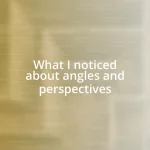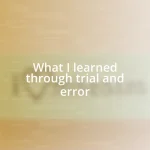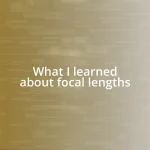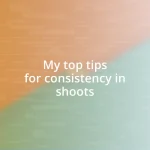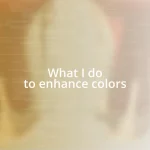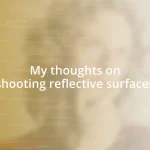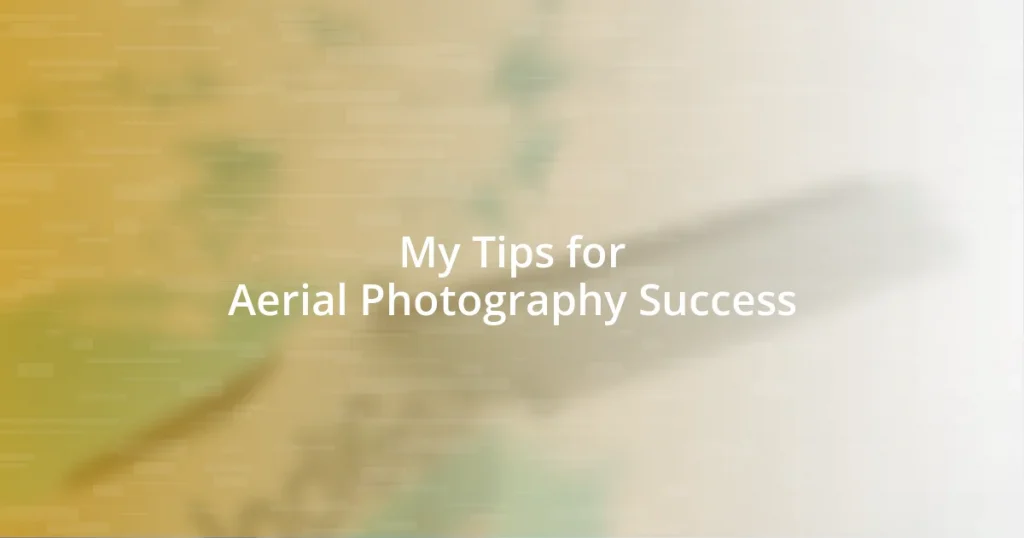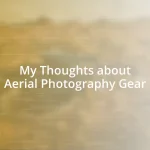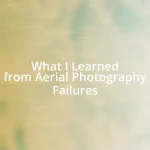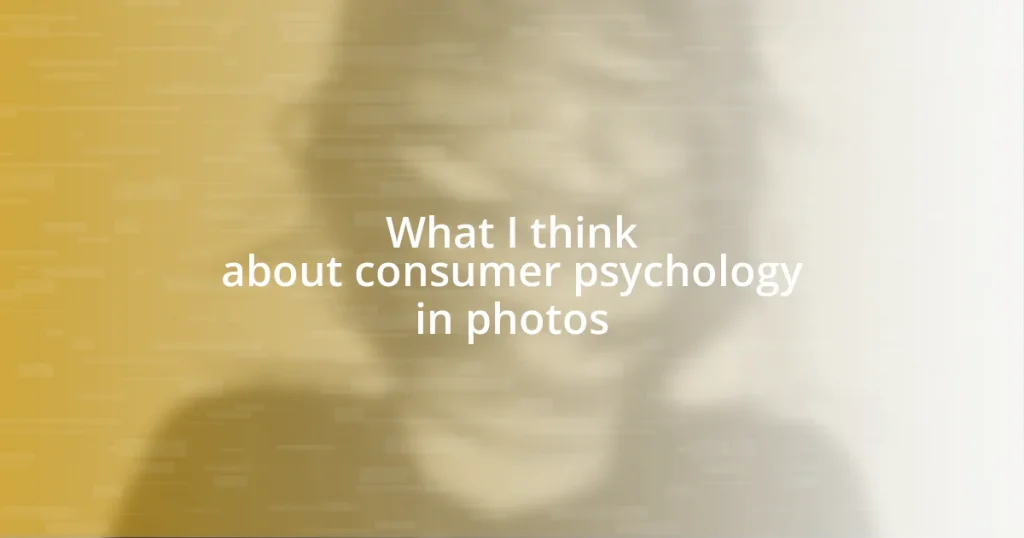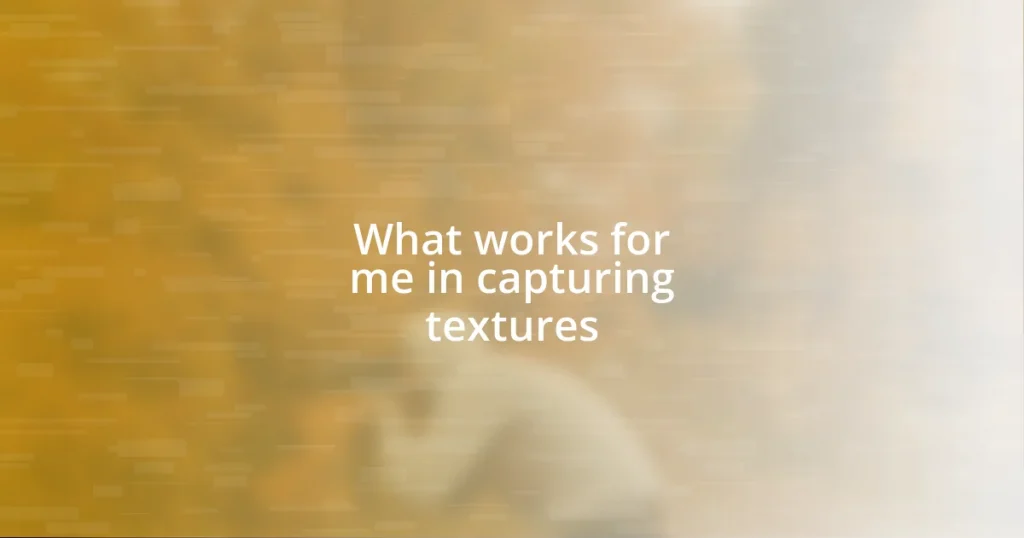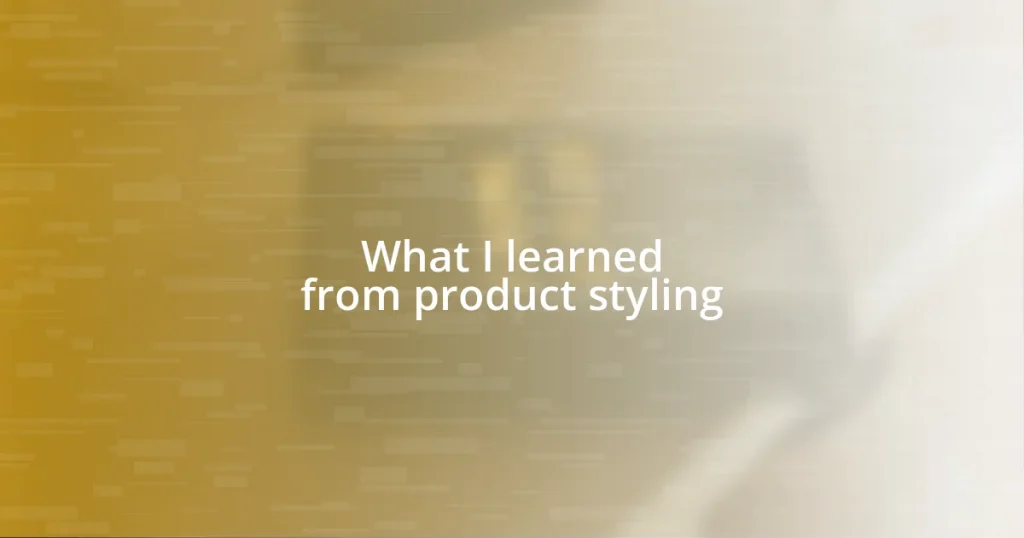Key takeaways:
- Aerial photography enhances perspectives and requires knowledge of camera settings like ISO, shutter speed, and aperture for well-exposed images.
- Choosing the right drone involves considering camera quality, flight time, stability features, and user experience to improve image quality and creativity.
- Post-processing techniques such as color correction, sharpening, and noise reduction are crucial for transforming aerial images into stunning visuals, while ensuring safe drone operation is essential to avoid accidents.

Understanding Aerial Photography Basics
Aerial photography is all about perspective; it’s the beauty of capturing landscapes and cityscapes from heights that transform ordinary scenes into extraordinary visuals. I recall my first experience piloting a drone over a stunning coastline, the thrill of seeing waves clash with cliffs from above was simply unforgettable. Have you ever looked at a scene from a different angle and felt a rush of excitement? That’s the magic of aerial photography.
Understanding the technical basics is vital. It’s not just about flying high; it’s about knowing your camera settings, such as ISO, shutter speed, and aperture. I learned the hard way during a sunset shoot when my images turned out too dark because I hadn’t adjusted my settings properly. This taught me the importance of a well-exposed image, especially when you want to capture vibrant colors and stunning contrasts.
Another key aspect to consider is composition. It’s essential to think about how to frame your shots from above in a way that draws the viewer’s eye. I remember shooting a forest canopy, and by using leading lines—like pathways or riverbanks—I was able to create a sense of depth that made the photograph pop. What strategies do you think could enhance your own aerial compositions?

Choosing the Right Drone
Selecting the right drone is crucial for elevating your aerial photography game. I clearly remember the day I decided to invest in my first drone; it felt like stepping into a new world. The vast array of options out there can be overwhelming, from feature sets to price points. I found that taking the time to research different models made a significant difference in my results, especially in terms of image quality and stability in the air.
Here are some factors to keep in mind when choosing a drone:
- Camera Quality: Look for high-resolution cameras with good lens options.
- Flight Time: Longer battery life ensures you get more shots without frequent landings.
- Weight and Portability: Lighter drones are easier to carry, but make sure they still have robust features.
- GPS and Stability Features: These help maintain a steady shot, especially in windy conditions.
- User Experience: Consider if it’s beginner-friendly or more suited for an advanced pilot.
In my own experience, when I switched to a drone with excellent stability features, my shots became markedly clearer, and I could focus more on composition rather than worrying about flight stability. This change opened up my creative possibilities, allowing me to explore different terrains more confidently.

Essential Camera Settings for Drones
Understanding the essential camera settings for drones can make all the difference in transforming your aerial photography from ordinary to exceptional. One of the first settings I always check is the ISO. Keeping it low in bright conditions reduces noise and enhances image clarity. I learned this the hard way during a mid-day shoot when I cranked up the ISO too high—my images came out grainy and dull, which was quite disappointing.
Another crucial setting is shutter speed. For aerial shots, especially when there’s movement, I recommend a speed of at least 1/500th of a second, particularly on windy days. I remember a moment capturing a fast-moving river where my slower shutter speed blurred the water’s motion too much; I regretted not adjusting it sooner. Experimenting with different shutter speeds will give you a better sense of how to freeze action or create a dreamy effect.
Aperture is also significant for depth of field, enabling you to focus on your subject while blurring the background. I often set my aperture around f/5.6 to f/8 for those expansive landscape shots. This range has historically offered the sharpest results, making images stand out beautifully. What settings have you experimented with that led to unexpected successes?
| Setting | Recommendations |
|---|---|
| ISO | Keep it low (100-400) under bright conditions; adjust higher in low light. |
| Shutter Speed | Start at 1/500th for dynamic shots; increase in low light. |
| Aperture | f/5.6 to f/8 for landscapes; adjust for desired depth of field. |

Best Practices for Composition
One of the best practices for composition in aerial photography is utilizing the rule of thirds. I find that placing the subject off-center often creates a more engaging image. For instance, during a sunset shoot over the ocean, my decision to align the horizon along the top third of the frame breathed life into the scene, drawing viewers into the tranquil beauty of the moment. Have you ever noticed how a simple shift in positioning can dramatically enhance the visual story?
Another effective technique is to incorporate leading lines. Roads, rivers, or even shadow patterns can guide the viewer’s eyes toward the focal point of your photograph. I remember hovering above a winding mountain road, where the curves led straight to a breathtaking vista. It was as if the landscape itself was inviting me to capture its allure, creating a compelling journey for anyone who gazes at the image.
Finally, don’t shy away from shooting from unique perspectives. Trying angles that might seem unconventional, like shooting directly down, can yield surprising and captivating results. I experimented with this when capturing a vibrant festival from above, and the overhead view revealed patterns of movement and color that I wouldn’t have noticed otherwise. How do you think exploring different perspectives can expand your creative repertoire in aerial photography?

Post-Processing Techniques for Aerial Images
Post-processing is where the magic really happens for aerial images. I often start with basic adjustments like exposure and contrast, as they can dramatically impact the mood of a shot. A vibrant sunset over a cityscape can quickly turn flat if not tweaked right—believe me, I’ve experienced that moment of realization too late in the process.
When I delve into color correction, I can almost feel the image come alive. For instance, there was a time I captured a stunning landscape that looked drab after import. A little playing with the HSL (Hue, Saturation, Luminance) sliders brought the greens and blues to life, making me feel as if I was witnessing the scene all over again. Have you ever had that moment when your edits completely transformed an image? It’s like uncovering a hidden treasure buried under layers of dullness and uncertainty.
Finally, sharpening and noise reduction are key stages in my workflow. I find that a subtle touch of sharpening can add clarity to those rugged mountain peaks, while noise reduction smooths out any graininess from high-ISO shots. Balancing these elements requires a delicate touch—too much sharpening can ruin an image, transforming intricate details into harsh artifacts. It’s a learning curve but navigating it feels rewarding. What’s your go-to tactic for ensuring your aerial images reach their fullest potential?

Tips for Safe Drone Operation
When it comes to safe drone operation, I can’t stress enough the importance of pre-flight checks. Before taking to the skies, I always ensure that my drone’s battery is fully charged and that I’ve done a thorough inspection of the propellers. Once, I almost launched without double-checking, and the thought of a mid-air malfunction still sends chills down my spine. Have you ever had a close call? Those moments teach you to be diligent and thorough.
Staying aware of your surroundings is crucial. I find it helpful to scout the area beforehand, noting any obstacles like power lines or trees. There was a time I lost track of a sweet spot I had scoped out because I wasn’t paying attention to those pesky power lines. That experience reminded me why situational awareness is pivotal—not just for my drone, but for capturing those great shots.
Lastly, always respect local regulations and privacy concerns. I recall a shoot where I was completely wrapped up in capturing stunning urban shots, only to realize later that I hadn’t considered the privacy of residents below. That sparked a more profound understanding in me; it’s not just about getting the shot, but also being responsible. Have you thought about how your photography choices impact others? Adopting this mindset can elevate your work ethically and artistically.



